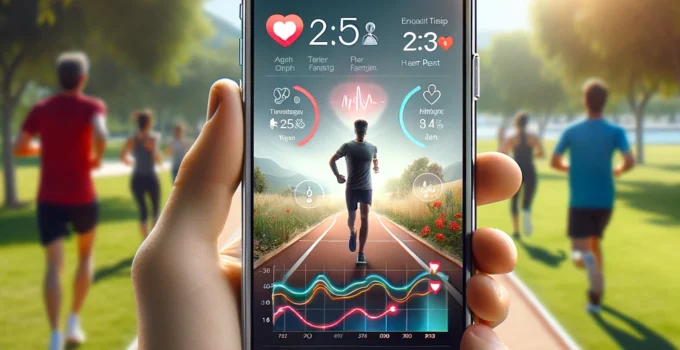Maximizing Your Fitness Journey: Expert Tips for Utilizing the iOS Health App. With the proliferation of mobile technology, fitness tracking has become an integral part of many people’s lives. The iOS Health app is a robust tool that consolidates health data and fitness activities to help users monitor their wellbeing and achieve fitness goals. This guide provides a deep dive into the iOS Health app, offering practical tips to harness its full potential for your fitness regimen.
A Comprehensive Guide to Setting Up Emergency SOS on Your iOS Device
The Health app is more than just a step counter; it offers a comprehensive platform to store and analyze all health-related data. To start, familiarize yourself with the app’s dashboard. This is where you can view your daily activity, nutrition intake, sleep patterns, and more. Understanding where to find this data is key to utilizing the app effectively.
One of the first steps in leveraging the Health app is to set specific health and fitness goals. Whether it’s increasing daily step count, tracking calorie intake, or monitoring heart rate, setting clear goals can help you stay motivated and measure progress accurately. The app allows you to customize your dashboard to highlight the goals that are most important to you.
Integrating other fitness apps with the Health app can provide a more holistic view of your health. Many third-party apps designed for specific activities like running, cycling, or yoga can sync their data with the Health app, creating a comprehensive fitness profile in one place.
Sleep tracking is another powerful feature of the Health app. Proper sleep is crucial for recovery, especially if you are engaged in regular physical training. By monitoring your sleep patterns, you can adjust habits that may be affecting your sleep quality.
The Health app also includes medical ID features, which are crucial in emergencies. You can store vital health information such as allergies, medical conditions, and emergency contacts that are accessible to first responders even from a locked screen.
Regularly updating your personal information, such as weight and height, ensures the accuracy of the activity metrics. The Health app uses this information to calculate metrics like calorie burn, so keeping it up-to-date is crucial for precise tracking.
Nutrition tracking is another area where the Health app shines. You can log your food intake to monitor your nutrition over time, which is especially useful for those on specific diets or those trying to achieve weight-related goals.
The app also allows for the monitoring of heart health by tracking data like heart rate and blood pressure. This information can be vital for detecting potential health issues early. Regular monitoring can provide you with insights into your cardiovascular health, aiding in lifestyle adjustments or discussions with your healthcare provider.
For women, the Health app offers menstrual cycle tracking, which can help predict your next period and fertile windows, useful for family planning and understanding your cycle better.
One of the less-known but valuable features of the Health app is its environmental health tracking, like monitoring noise levels around you. This can help you prevent hearing loss by alerting you when ambient noise reaches levels that might be harmful over time.
Exercise detection is a feature that uses the sensors on your iOS device or Apple Watch to automatically detect when you are exercising and what type of exercise you are doing. This can help ensure that all your efforts are counted towards your daily activity goals.
The mindfulness section of the app tracks minutes spent in meditation or mindful activities, promoting overall mental health as well as physical fitness.
Regularly review the data collected to understand your progress and health trends over time. This can help you adjust your fitness strategies to better meet your goals.
In addition to the built-in features, the Health app’s data sharing options with your healthcare provider can be a game changer. This seamless sharing can help keep your doctor updated on your health metrics outside of regular visits.
Make use of the Health app’s ability to create medical reports. You can generate detailed reports about your health data, which can be useful for medical appointments or personal records.
As you continue to use the Health app, periodically explore new updates and features. Apple frequently updates iOS with new health and fitness tracking features to improve user experience and provide more detailed insights.
For users who are serious about tracking their health, consider pairing the Health app with an Apple Watch. This provides more accurate tracking of physical activities and health metrics like heart rate and electrocardiogram (ECG) data.
Lastly, ensure that you maintain privacy and security by managing app permissions and data sharing settings effectively. Health data is sensitive, and controlling who has access to this information is crucial.
In conclusion, the iOS Health app is a powerful ally in the quest for better health and fitness. By following these tips and regularly engaging with the app, users can significantly enhance their understanding and management of personal health, leading to improved wellbeing and fitness outcomes.
